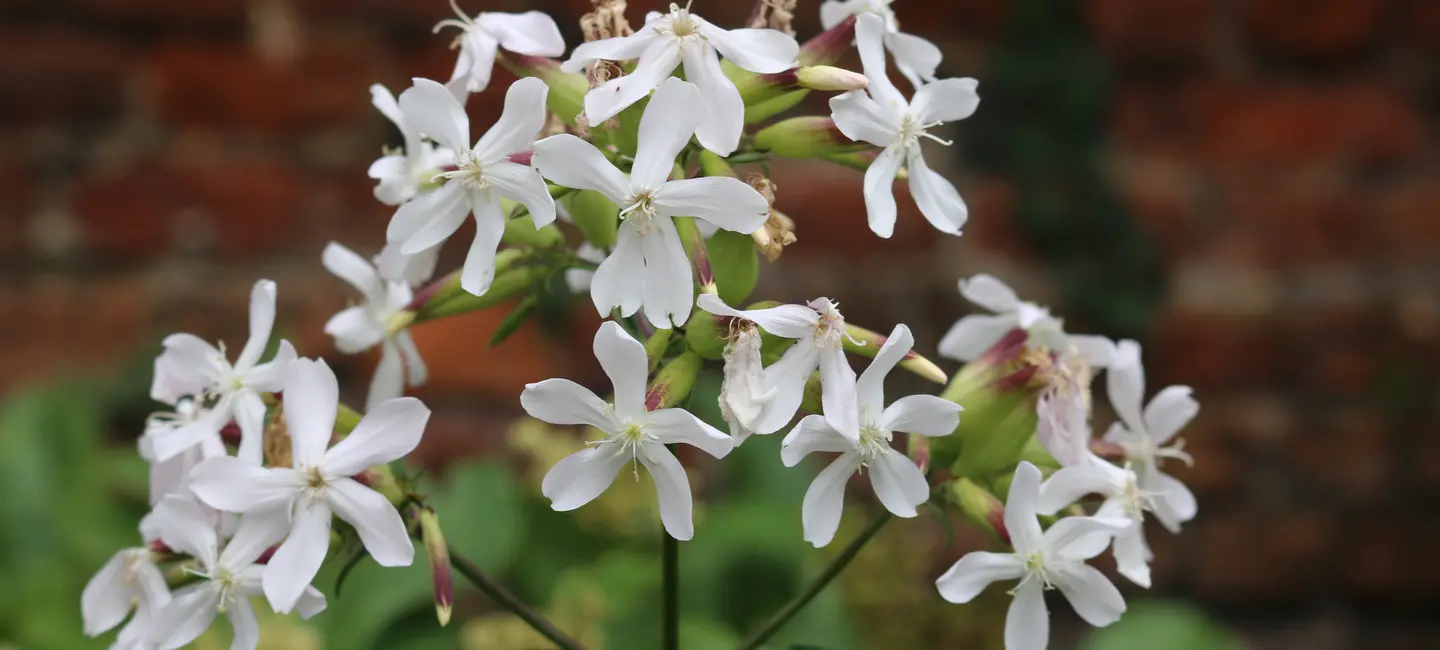
White soapwort is an herb. Its name comes from the fact that Franciscan and Dominican monks in the Middle Ages considered soapwort a divine gift that was meant to keep them clean. The root is used to make medicine.
People take white soapwort for cough, bronchitis, and swelling (inflammation) of the upper airways and lungs.
White soapwort is sometimes applied directly to the skin for ongoing (chronic) skin problems and eczema.
Don’t confuse white soapwort with red soapwort.
Is It Effective?
Natural Medicines rates effectiveness based on scientific evidence according to the following scale: Effective, Likely Effective, Possibly Effective, Possibly Ineffective, Likely Ineffective, Ineffective, and Insufficient Evidence to Rate.
- Cough.
- Bronchitis.
- Swelling (inflammation) of the upper airways and lungs.
- Skin problems such as eczema.
- Other conditions.
More evidence is needed to rate the effectiveness of white soapwort for these uses.
Is it Safe?
White soapwort has chemicals that help to break up chest congestion by thinning mucous and making it easier to cough up.
White soapwort seems safe for most adults when taken by mouth appropriately. It can cause stomach irritation, nausea, and vomiting.
Special Precautions & Warnings:
Pregnancy and breast-feeding: Not enough is known about the use of white soapwort during pregnancy and breast-feeding. Stay on the safe side and avoid use.
Stomach and intestinal irritation: White soapwort might make stomach and intestinal problems worse.
It is not known if White Soapwort interacts with any medicines. Before taking White Soapwort, talk with your healthcare professional if you take any medications.
There are no known interactions with herbs and supplements.
There are no known interactions with foods.
The appropriate dose of white soapwort depends on several factors such as the user's age, health, and several other conditions. At this time there is not enough scientific information to determine an appropriate range of doses for white soapwort. Keep in mind that natural products are not always necessarily safe and dosages can be important. Be sure to follow relevant directions on product labels and consult your pharmacist or physician or other healthcare professional before using.
Gisófila, Gypsophila paniculata, Gypsophilae Radix, Gypsophile Paniculé, Nube, Paniculata, Saponaire Blanche, Saponaire d’Orient, Saponaria Blanca, Soapwort, Velo de Novia.
Natural Medicines disclaims any responsibility related to medical consequences of using any medical product. Effort is made to ensure that the information contained in this monograph is accurate at the time it was published. Consumers and medical professionals who consult this monograph are cautioned that any medical or product related decision is the sole responsibility of the consumer and/or the health care professional. A legal License Agreement sets limitations on downloading, storing, or printing content from this Database. Except for any possible exceptions written into your License Agreement, no reproduction of this monograph or any content from this Database is permitted without written permission from the publisher. Unlawful to download, store, or distribute content from this site.
For the latest comprehensive data on this and every other natural medicine, health professionals should consult the Professional Version of the Natural Medicines. It is fully referenced and updated daily.
© Copyright 1995-2022. Therapeutic Research Faculty, publishers of Natural Medicines, Prescriber's Letter, and Pharmacist's Letter. All rights reserved.
